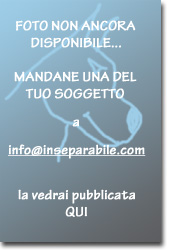DUTCH DECOY DOG (Kooikerhondje)

We are collecting the material for being able to realize the card of the Koolkerhondje
FCI-Standard N° 314 / 19. 10. 2001 / GB
TRANSLATION : Raad van Beheer, revised by Prof.Triquet.
ORIGIN : The Netherlands.
SUGGESTED BREEDINGS by MENANDPETS.COM:
No breeding to signal
if you want to know like signaling yours, contacts: marketing@inseparabile.it
DATE OF PUBLICATION OF THE ORIGINAL VALID STANDARD : 25.08.2001.
UTILIZATION : This little spaniel which worked formerly and is still working so successfully in duck decoys is a true sporting dog with a lively temperament. It is harmoniously built. Its coat is shiny, nicely coloured and well feathered.
CLASSIFICATION F.C.I. : Group 8 Retrievers-Flushing Dogs-Water Dogs.
Section 2 Flushing Dogs.
Without working trial.
BRIEF HISTORICAL SUMMARY : This Dutch breed is now officially recognized. The interim standard was approved by the « Raad van Beheer » on June 18, 1966. As she had already done with numerous other breeds, Baroness van Hardenbroek added another jewel to the Dutch breeds. Good quality specimens in sufficient number are now being bred. The annual meeting of the Kooikerhondje played an important part in the development of this sporting breed.
GENERAL APPEARANCE : Agile parti-coloured dog with a nearly square body. It has a well feathered tail and a high head carriage.
IMPORTANT PROPORTIONS : The length of the body is slightly more than the height at withers. Length of the skull about equal to the muzzle.
BEHAVIOUR / TEMPERAMENT : Cheerful, but not noisy, very dependent on its domestic environment, friendly, good-natured and alert.
HEAD
CRANIAL REGION :
Skull : Sufficiently broad, moderately rounded.
Stop : Clearly visible, but not too deep.
FACIAL REGION :
Nose : Black.
Muzzle : Not too deep in profile.
Lips : Not overhanging.
Jaws/Teeth : The standard is scissor bite, pincer bite admitted.
Cheeks : Well filled.
Eyes : Almond-shaped, deep brown with a friendly, alert expression.
Ears : Medium sized, set on just above the line from the point of the nose to the corner of the eye; no white; hanging close to the cheeks. Long feathered, black tips (earrings) are preferred.
NECK : Straight and well muscled.
BODY :
Back : Strong.
Chest : Deep with sufficient spring of ribs.
TAIL : Carried on level with back or slightly above; not curled. Well feathered with a white plume, the last vertebra reaching the hock.
LIMBS
FOREQUARTERS : Forelegs straight and not too heavily feathered.
HINDQUARTERS : Breeches long feathered, but no feathering below the hock; the tarsal joint sufficiently angulated.
FEET : Small, with tight toes; covered with short hair.
GAIT / MOVEMENT : Should be flowing and springy, not stepping.
COAT
HAIR : Medium long, with a slight wave or straight; not curled and close fitting. Hair not too fine, well developed undercoat; easily kept.
COLOUR : Distinct patches of clear orange-red colour on white. Orange-red colour should dominate. Black and white, and tricoloured dogs are not admitted.
Head pattern : White blaze and orange-red coloured cheeks are preferred.
SIZE :
Height at the withers : About 35-40 cm (14-16 ins).
FAULTS : Any departure from the foregoing points should be considered a fault and the seriousness with which the fault should be regarded should be in exact proportion to its degree.
Any dog clearly showing physical or behavioural abnormalities shall be disqualified.
N.B. : Male animals should have two apparently normal testicles fully descended into the scrotum.